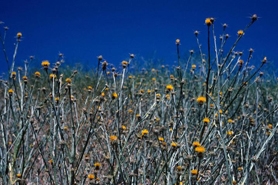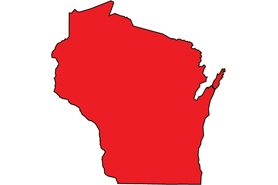Yellow star thistle
(Centaurea solstitialis)
Winter annual (germinates in the fall and flowers the following May through September). 1.5-3' tall.
Other names for this plant include:
- Common names: golden star thistle, yellow cockspur, yellow centaury, St. Barnaby's thistle
- Scientific names: Leucantha solstitialis
Classification in Wisconsin: Prohibited
- Ecological Threat
-
- Reported in disturbed sides such as roadsides and pastures.
- Identification
-
First-year plant leaves: Simple, deeply lobed, and 2-3" long.
Second-year plant leaves: Alternating leaves on the stem become shorter and narrower with pointed tips as they move up the branch; the base of leaves creates a winged appearance, dull green color, covered with woolly hairs.
Flowers: Yellow flower heads are 1" wide and have spines at the base; one flower at the end of each stem.
Fruits & seeds: One plant can produce 100,000 seeds. They generally do not move far unless seeds cling to animal fur, feathers or humans.
Roots: Taproot.
- Control
-
Mechanical: Plants can be pulled, mowed, or tilled before bloom. Controlled burns in the early flowering stage and repeated for three consecutive years.
Chemical: Foliar spray of glyphosate, triclopyr, clopyralid or picloram.
- Resources
- Sources for content:
- Czarapata, Elizabeth; Invasive Plants of the Upper Midwest: an illustrated guide to their identification and control. The University of Wisconsin Press. 2005. Pg. 134
- USDA Forest Service, Field guide for managing yellow starthistle in the Southwest [exit DNR].



